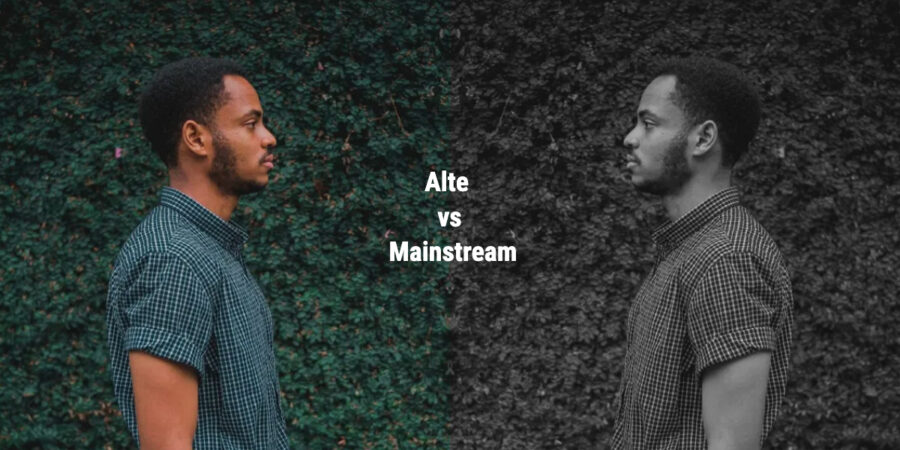In the world of contemporary fashion, two distinct narratives unfold, each weaving its unique spell on the canvas of style – Alte vs Mainstream. As fashion enthusiasts navigate the bustling realm of trends and expressions, the dichotomy between the avant-garde allure of Alte fashion and the polished charm of Mainstream styles takes centre stage.
This article goes on a clothing journey, digging into the complex threads that define these contrary fashion worlds, touring the skill, influences, and cultural impacts that separate Alte fashion style from its mainstream colleague.
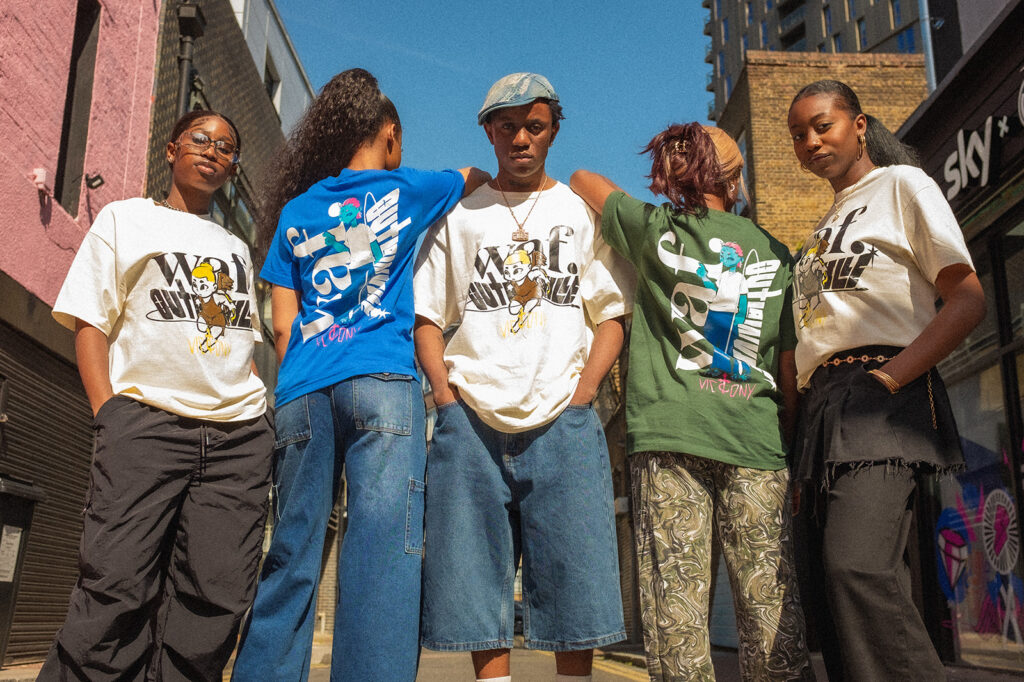
The Alte fashion drive, a stubborn offspring of the alternative culture, has turned out to be a buzzing place for expressing yourself and pushing your art to its limit. Defined by its penchant for unconventional silhouettes, eclectic textures, and a fearless approach to mixing and matching, Alte fashion serves as a playground for those who seek to challenge traditional norms.
On the flip side, Mainstream fashion, with its pulse firmly on global trends and mass appeal, encapsulates a refined and accessible elegance that caters to a broader audience.
Read Also: 7 Alte Fashion Icons Who Redefined Style
5 Key Differences in Fashion Styles
- Expression vs. Convention:
- Alte Fashion: Alte fashion thrives on self-expression and embraces the unconventional. It often rebels against mainstream norms, favouring unique silhouettes, experimental fabrics, and avant-garde designs. Alte fashionistas view clothing as a form of art and personal storytelling.
- Mainstream Fashion: Mainstream fashion, on the other hand, tends to adhere to widely accepted trends and conventional styles. It focuses on creating accessible, mass-appeal designs that cater to a broad audience. Trends are often dictated by established fashion houses and designers, aiming for widespread acceptance.
- Individuality vs. Uniformity:
- Alte Fashion: Individuality is at the core of Alte fashion. Devotees of the Alte style celebrate diversity and relish the freedom to mix and match styles, creating unique and personalized looks. There’s an emphasis on DIY aesthetics, vintage pieces, and a willingness to stand out from the crowd.
- Mainstream Fashion: Mainstream fashion often encourages a degree of conformity by promoting popular trends. While personal touches can be added, the emphasis is on following current fashion trends and adhering to a more standardized sense of style.
- Avant-Garde vs. Timelessness:
- Alte Fashion: Alte fashion embraces the avant-garde, pushing the boundaries of what is considered traditional or “safe.” Designs may be experimental, featuring bold patterns, asymmetrical cuts, and unconventional accessories that challenge the status quo.
- Mainstream Fashion: Mainstream fashion tends to focus on timeless elegance and enduring styles. While trends come and go, mainstream designs often incorporate classic elements that withstand the test of time, making them more universally accepted.
- Cultural Influence vs. Global Trends:
- Alte Fashion: Alte fashion draws inspiration from a wide array of cultural influences, celebrating diversity and multiculturalism. Designs may reflect a fusion of global aesthetics, breaking away from regional or national fashion boundaries.
- Mainstream Fashion: Mainstream fashion is often influenced by global trends, but it may also reflect the cultural context in which it originates. Fashion capitals like Paris, Milan, and New York set trends that are then disseminated worldwide.
- Accessibility vs. Exclusivity:
- Alte Fashion: Alte fashion can be seen as more exclusive, focusing on limited-edition pieces, independent designers, and a DIY ethos. It often appeals to those seeking a more unique and less mass-produced wardrobe.
- Mainstream Fashion: Mainstream fashion is designed for mass consumption, aiming to be accessible to a broad audience. It is widely available through retail outlets, making current trends accessible to a larger population.
While these distinctions highlight the general differences between Alte and Mainstream fashion, it’s important to note that these styles exist on a spectrum, and many individuals and designers draw inspiration from both worlds, creating a dynamic and ever-evolving fashion landscape.
5 diffrent alte vs and Mainstream Style
let’s go through five distinctive elements of Alte fashion style and compare them with their mainstream counterparts:
Alte Fashion Styles:
1. Deconstructed Silhouettes:
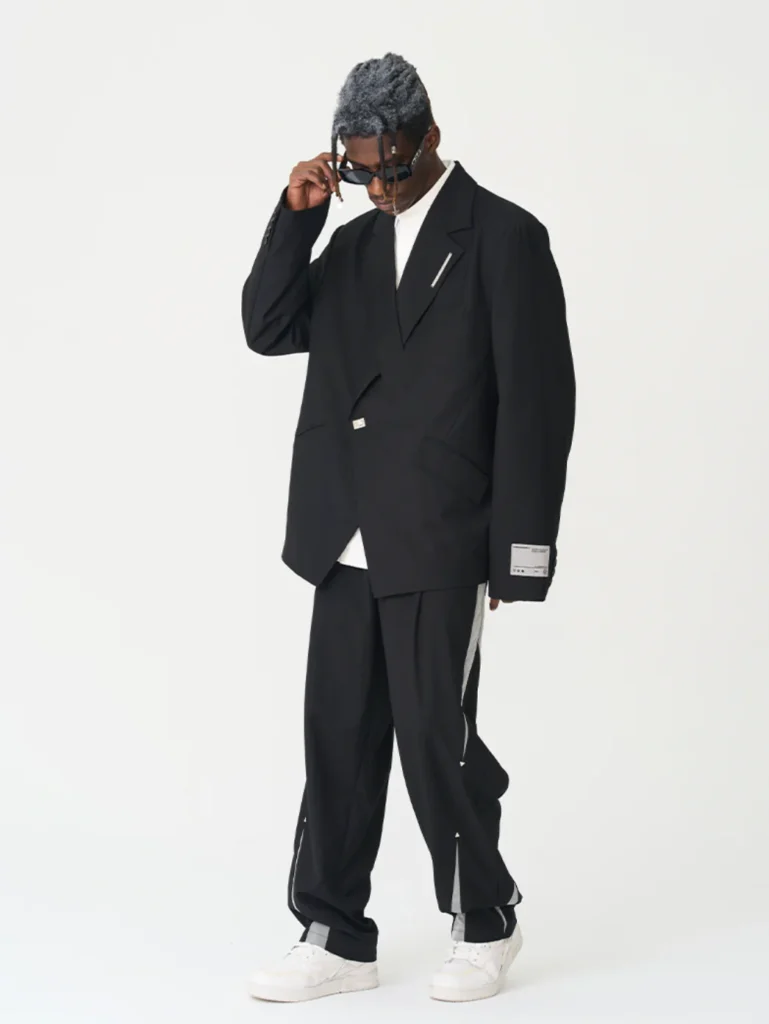
- Alte Fashion: Alte fashion often embraces deconstructed silhouettes, featuring asymmetrical cuts, exaggerated shapes, and unexpected proportions. This style challenges traditional tailoring norms, creating a dynamic and avant-garde visual impact.
- Mainstream Fashion: Mainstream fashion tends to favour well-defined and classic silhouettes that adhere to conventional proportions. While trends may evolve, mainstream designs typically maintain a more structured and predictable approach to garment construction.
2. Eclectic Layering:

- Alte Fashion: Layering is a key element in Alte fashion, with enthusiasts combining diverse textures, patterns, and accessories to create visually rich and complex outfits. Mixing and matching different elements contribute to a unique and personalized style.
- Mainstream Fashion: Layering is also present in mainstream fashion but often follows more streamlined and coordinated patterns. Mainstream layering tends to be more subtle, focusing on creating cohesive looks without excessive complexity.
3. DIY Aesthetics:
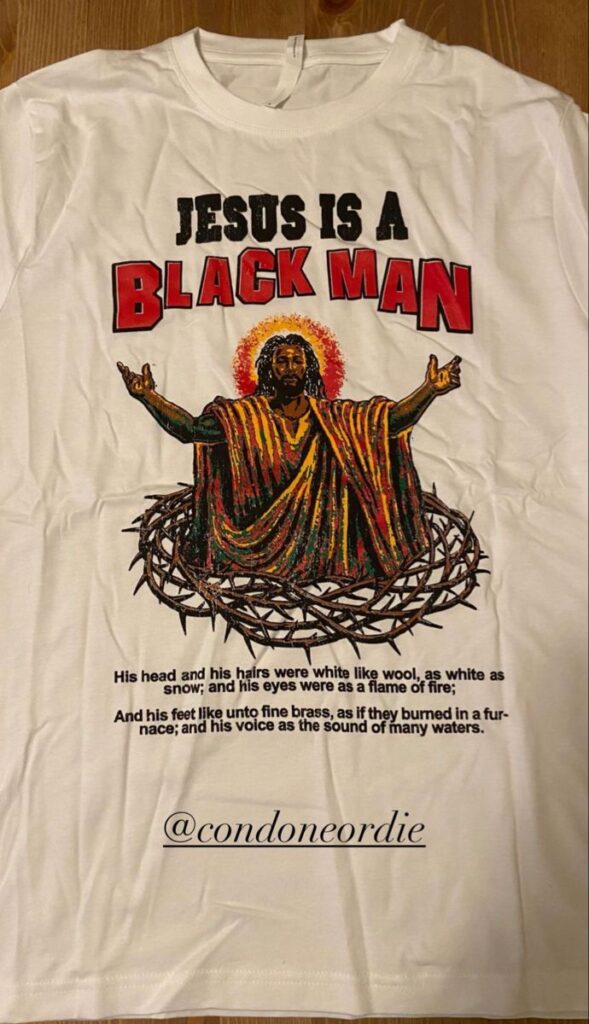
- Alte Fashion: Alte fashion often celebrates a Do-It-Yourself (DIY) ethos, encouraging individuals to personalize their clothing through customization, upcycling, and unique embellishments. This hands-on approach adds an element of individuality to each piece.
- Mainstream Fashion: Mainstream fashion, while offering a variety of styles, usually provides ready-made, mass-produced garments. Customization and DIY elements are less emphasized in mainstream fashion, with a focus on accessible and easily replicable designs.
4. Cultural Fusion:
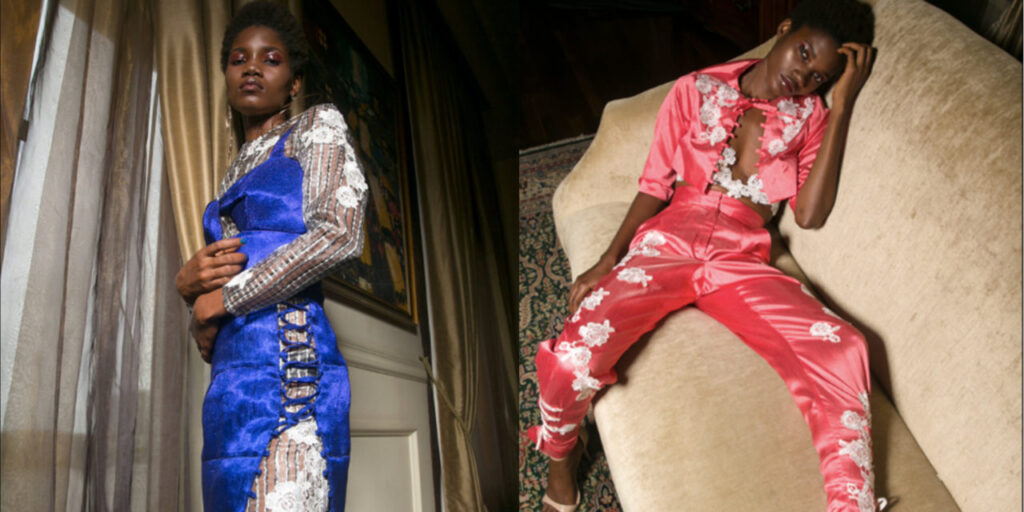
- Alte Fashion: Alte fashion frequently draws inspiration from diverse cultures, resulting in a fusion of global aesthetics. This may manifest in the incorporation of ethnic prints, traditional garments, or a blending of cultural motifs to create a unique and inclusive style.
- Mainstream Fashion: Fashion also incorporates cultural influences, but it often standardizes trends globally. Mainstream designs occasionally adapt cultural elements, but the approach is generally more subdued and commercialized.
5. Bold and Unconventional Materials:
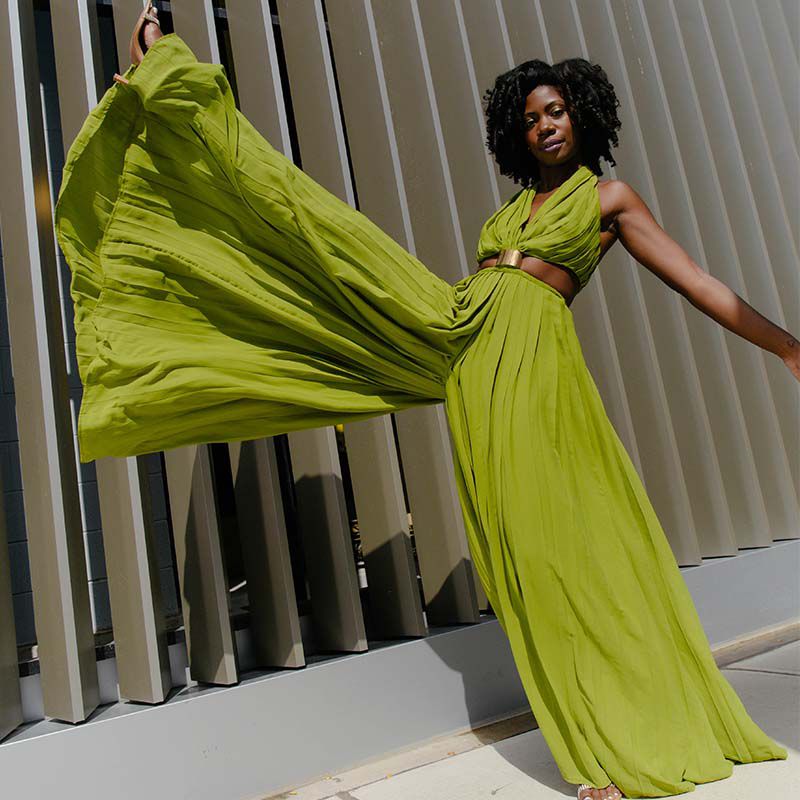
- Alte Fashion: Alte Fashion earns recognition for actively experimenting with bold and unconventional materials, including recycled fabrics, alternative textiles, and even unexpected materials such as PVC or mesh. This adds an element of surprise and edginess to the overall look.
- Mainstream Fashion: Mainstream fashion tends to rely on established and widely accepted fabrics, with a focus on comfort and durability. While there might be occasional experimentation, mainstream designs typically use materials that cater to mass production and consumer preferences.
These comparisons highlight the unique characteristics of Alte fashion, which often diverge from the more mainstream and conventional approaches to style.
See Also: 5 Nigerian Male Celebrities That Are Alte Fashion Style Lovers
The fashion world is lively, laced with outfits of Alte vs Mainstream styles. Each adds its unique type to the ever-changing scene. While we’ve gone through the clear features that set Alte vs Mainstream fashion apart, it is important to note that these distinctions are not robust boundaries. Instead, they form a range where the lines blur, and creativity knows no limits.
Fashion is a true way of expressing yourself, and individuals, as designers, mostly get their inspiration from both worlds. The active relationship between Alte’s avant-garde spirit and Mainstream’s elegant charm creates a rich and different view. A view that looks at a wide range of tastes and preferences.
As fashion enthusiasts navigate this kaleidoscope of styles, it becomes evident that the true beauty lies in there. Whether one leans towards the bold experimentation of Alte or the timeless allure of Mainstream. The fashion journey is a personal odyssey of self-discovery and expression.
FAQs for Alte vs Mainstream
What distinguishes Alté fashion from mainstream styles?
Alté fashion embraces a retro and vintage style but is somehow tagged as ‘new school.
Are there specific fashion elements that define Alté style?
Alté fashion has a mix of vintage, retro, and edgy styles to it. From accessories that are always retro to funny hairstyles
Can Alté and mainstream styles coexist in a single wardrobe?
Yes, they can coexist in the same wardrobe. All that is needed to make them work is a combination of styling.
How does Alté fashion celebrate cultural diversity?
The festival showcases the creativity, innovation, and diversity of the Alté community.
Is there a specific age group or demographic associated with Alté fashion?
Straight out of Lagos, Alté is a loosely defined cultural movement led by creatives who want to do things differently. More than a lifestyle, it’s an attitude

